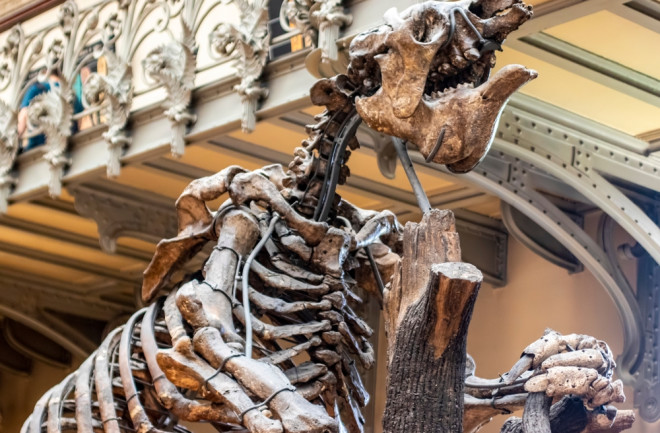Sloths live in perpetual slow motion in the tropical rainforests of Central and South America today. But Roughly 10,000 years ago, a family of ancient, giant relatives would roam any number of terrains in the Americas.
Giant ground sloths were directly related to their modern-day cousins, which are arboreal, or tree dwelling, and are limited in how big they can grow. But the largest of the land dwelling giant ground sloths, Megalonyx jeffersonii, could grow up to an astonishing three meters long (9.8 feet) and may have weighed up to a ton (2,205 pounds).
Where Did Giant Ground Sloths Live?
Fossil records reveal a distribution of ancient sloths which spanned Patagonia, the southernmost tip of South America, all the way up to Alaska, in the northernmost parts of North America, according to Julia Tejada, a geobiologist who has studied giant ground sloths, from the California Institute of Technology.
"Their diverse morphologies and sizes, coupled with varied geographic locations — coastal areas alongside marine animals, mountainous dry regions like the high Andes, and rainforests — indicate a wide array of ecological niches," says Tejada.
In contrast to their modern relatives, the fossil evidence suggests extinct giant sloths also lived near the ocean and may have even displayed semi-aquatic behaviors.
"Imagining a journey back in time to the coast of Peru five million years ago, we would witness sloths swimming in the cold Pacific waters, coexisting with penguins, sharks, seals, and other aquatic animals," adds Tejada.
Read More: 5 Of The Biggest Animals To Ever Live On Earth
What Did Giant Ground Sloths Eat?
It has been traditionally thought that these ancient sloths were herbivores. The morphology of their teeth has suggested that these sloths consumed vegetation, similar to the herbivorous nature of their modern cousins.
However, Tejada was part of a team that analyzed chemical signatures preserved in the ancient bones of giant sloths — specifically, nitrogen isotope ratios of certain amino acids — and found something quite surprising.
"In two fossil sloth species, I discovered that one of them (Mylodon darwinii) was not strictly herbivorous but rather an opportunistic omnivore. This finding suggests a potentially more ecologically versatile behavior than traditionally believed," says Tejada.
Read More: 6 Ancient Mega-Predators that Once Ruled the World
Why Did Giant Ground Sloths go Extinct?
Since giant ground sloths occupied many ecological niches (and therefore genetic diversity), and may have had a diverse diet, they thrived in their time. However, roughly 10,000 years ago, giant ground sloths disappeared from the geological record. Climate change was altering life on Earth and the Ice Age covered regions in ice that were once fertile habitats for giant ground sloths.
The first humans were also entering the Americas. The activities of humans, coupled with a changing climate, likely made giant sloths and other megafauna more vulnerable to extinction.
"While climatic changes may have played a role, there is growing evidence that the primary and most impactful factor was human migration from Africa to other continents. Not active predation necessarily, but humans altering the ecosystems," says Tejada.
Scientists are confident that early human settlers interacted with giant ground sloths, largely because of the recent discovery of human and sloth footprints being found together, and human engravings being found on sloth bones.
Read More: These 5 Giant Animals Walked Alongside Ancient Humans

